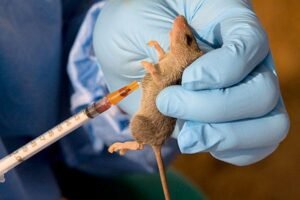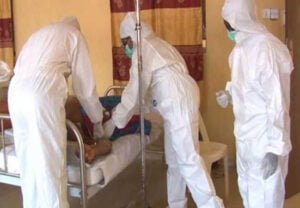Lassa fever, a deadly viral hemorrhagic disease, continues to pose a major public health threat in Nigeria. The latest epidemiological report from the Nigeria Centre for Disease Control and Prevention (NCDC) reveals that young adults, particularly those aged 21 to 30, are now the most affected demographic, a shift of sort. In this special report, Juliet Jacob examines how and why the disease attacks young people, the implications of this development, (new finds), factors contributing to the spread, and the urgent need for sustainable solutions.
The Burden of Lassa Fever
Global Impact

According to the World Health Organization (WHO), Lassa fever causes an estimated 300,000 to 500,000 infections annually in West Africa, leading to approximately 5,000 to 10,000 deaths. The overall case fatality rate (CFR) is about 1%, but among hospitalized patients with severe disease, the rate can exceed 15%.
Nigeria’s Situation
It is worrisome that Nigeria continues to experience recurrent outbreaks, with significant cases reported across multiple states. The NCDC, in its latest advisory, disclosed that as of March 2, 2025, the country had recorded 2,960 suspected cases, with 563 confirmed infections and 103 deaths. The current case of fatality rate stands at 18.3%, slightly lower than the 18.9% recorded during the same period in 2024.

Young Adults: The Most Affected Group
The recent report highlights a worrying shift in demographic vulnerability. The median age of infected individuals is 30 years, with cases ranging from ages 1 to 94. The report explains that notably, men are slightly more affected than women, with a male-to-female ratio of 1:0.8. The concentration of cases among young adults raises concerns about exposure risks and preventive measures.
Why Are Young Adults Most Affected?
The report sheds light stating that, “Increased Exposure in Rural and Semi-Urban Areas: Many young adults work in agricultural and trading sectors, where they store food in unprotected conditions, increasing the likelihood of contact with infected rodents.

Another factor is: Poor Sanitation and Rodent Infestation: Lassa fever is primarily spread through contact with food or household items contaminated by rodent urine or faeces. Inadequate sanitation in high-burden areas exacerbates the problem.
Also contributing to it is: Delayed Health-Seeking Behaviour: Many individuals fail to seek medical attention early, leading to complications and higher fatality rates.

Government Response and Challenges:
Intervention Efforts
The NCDC has intensified response measures, including:
Deployment of National Rapid Response Teams (NRRT) to Gombe, Nasarawa, and Benue.
Training of healthcare workers in Bauchi, Ebonyi, and Benue, with plans to expand to Plateau and Taraba.
Partnerships with WHO, Médecins Sans Frontières (MSF) Geneva, and other stakeholders to improve case management.
Nationwide sensitization campaigns on rodent control and personal hygiene.
Challenges in Containment
Despite these efforts, several challenges persist:
Inadequate State-Level Response: Experts like Prof. Oyewole Tomori criticize state governments for being largely reactive rather than proactive in addressing the issue.
Absence of Sustainable Sanitation Measures: Inefficient waste disposal and poor environmental hygiene contribute to the unchecked spread of rodents.
Deficient Healthcare Infrastructure: The shortage of well-equipped medical facilities hinders early diagnosis and effective treatment.
The Search for a Vaccine
While vaccine development has been underway for years, no widely available Lassa fever vaccine exists yet. Researchers continue to work on clinical trials, and experts call for accelerated efforts to make an effective vaccine accessible.
The Way Forward: Expert Recommendations
To curb the outbreak, public health experts recommend:
Improved Surveillance and Early Detection: Strengthening local disease monitoring systems to facilitate early response.
Enhanced Public Awareness Campaigns: Educating communities on proper food storage, hygiene, and the importance of early medical intervention.
Decentralizing NCDC Operations: Establishing regional centers for faster outbreak response and better resource allocation.
State Government Accountability: Urging subnational authorities to take proactive steps in disease prevention and control.
Conclusion
The increasing impact of Lassa fever on young adults is a concerning development that requires urgent attention. The young adult demography is a very crucial part of the country’s workforce that contributes significantly to her GDP and economic growth and prosperity. The young adult population of any nation is the future leaders. To ignore any problem affecting the young people has a direct negative implication on the future of the country. So, all efforts aimed at solving the new challenge posed by Lassa fever by the government should be drastic and handled as an emergency, besides global interventions.
The federal government through its agencies should strive to mitigate the spread of Lassa Fever generally. The government must not relent in reengineering its sustainable sanitation practices, improve healthcare response, and commence without further delays awareness and sensitization campaigns in the mass media. Not forgetting to bring to reality the long-awaited vaccine, hence, it remains critical in Nigeria’s fight against Lassa fever.
On their part, the young adults and all Nigerians must remain vigilant, adopt preventive measures, and seek medical attention at the earliest sign of infection.
The NCDC’s report calls for desperate actions to safe not only the lives of the young people but also the nation’s economy in the long run.



